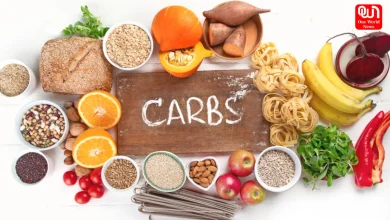Flexitarian Diet Explained! How Does It Work?
Flexitarian Diet is a flexible and sustainable way of eating. It focuses on plant and nutrient based food.
Everything You Need To Know About Flexitarian Diet
The flexitarian diet is a relatively recent dietary approach that combines the flexibility of vegetarianism with occasional consumption of meat and other animal products. This approach is characterized by an emphasis on plant-based foods while allowing for occasional indulgence in meat or fish. The term “flexitarian” is a portmanteau of “flexible” and “vegetarian,” reflecting the adaptable nature of this eating style.
Key Principles of the Flexitarian Diet:
- Plant-Based Emphasis: The foundation of the flexitarian diet is plant-based foods such as fruits, vegetables, whole grains, legumes, nuts, seeds, and plant-based protein sources like tofu and tempeh. These foods are rich in essential nutrients, fiber, and antioxidants, promoting overall health and well-being.
- Moderate Meat Consumption: Unlike traditional vegetarian or vegan diets, the flexitarian diet allows for occasional consumption of meat, poultry, fish, and dairy products. However, the emphasis is on quality over quantity, with smaller portions and less frequent consumption of animal-derived foods.
- Flexibility and Personalization: One of the defining features of the flexitarian diet is its flexibility. Followers of this eating style have the freedom to tailor their food choices based on personal preferences, cultural influences, and individual health goals. Some may choose to eat meat only on certain days of the week, while others may opt for meatless meals most of the time with occasional exceptions.
- Focus on Nutrient Density: Regardless of whether a meal includes animal products or not, the flexitarian diet prioritizes nutrient-dense foods that provide a wide range of essential vitamins, minerals, and other beneficial compounds. This focus on nutrient density ensures that followers of the diet meet their nutritional needs while promoting overall health and vitality.
Read more: Best holiday destinations in April 2024! (oneworldnews.com)
How Does the Flexitarian Diet Work?
- Gradual Transition: For individuals transitioning to a flexitarian diet from a more traditional omnivorous diet, the key is to make gradual changes over time. This may involve gradually increasing the proportion of plant-based foods in meals while gradually reducing reliance on meat and other animal products.
- Balanced Meal Planning: Following the principles of the flexitarian diet involves planning balanced meals that include a variety of plant-based foods, along with smaller portions of meat, fish, or dairy if desired. Emphasizing whole foods, such as fruits, vegetables, whole grains, and legumes, ensures a diverse intake of nutrients and promotes satiety.
- Experimentation and Variety: Flexitarians are encouraged to experiment with a wide range of plant-based ingredients, cooking methods, and recipes to keep meals interesting and enjoyable. This can involve trying new fruits and vegetables, exploring different cuisines, and incorporating plant-based protein sources like tofu, lentils, and chickpeas into meals.
- Mindful Eating: Like other mindful eating approaches, the flexitarian diet encourages mindfulness around food choices, hunger cues, and portion sizes. Paying attention to hunger and satiety signals, as well as savoring the flavors and textures of food, can help prevent overeating and promote a healthy relationship with food.
Read more: 5 Relationship Green Flags! (oneworldnews.com)
In summary, the flexitarian diet offers a flexible and sustainable approach to eating that emphasizes plant-based foods while allowing for occasional consumption of meat and other animal products. By focusing on nutrient-dense foods, balanced meal planning, and mindful eating practices, followers of the flexitarian diet can enjoy a diverse and satisfying diet that promotes health, well-being, and environmental sustainability.
Like this post?
Register at One World News to never miss out on videos, celeb interviews, and best reads.








